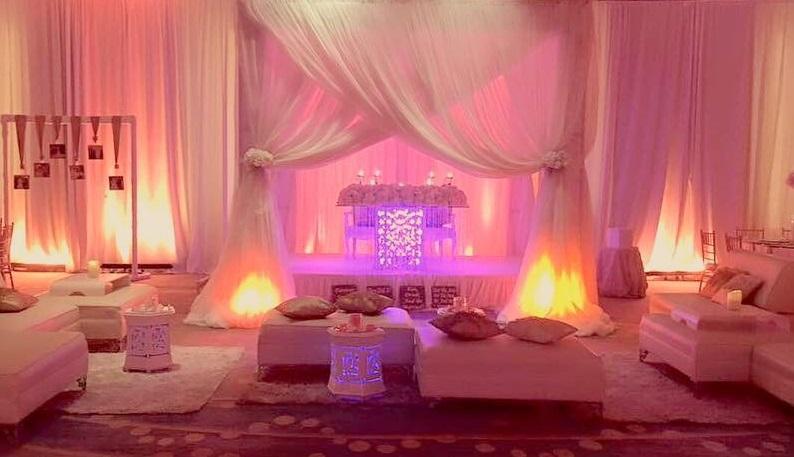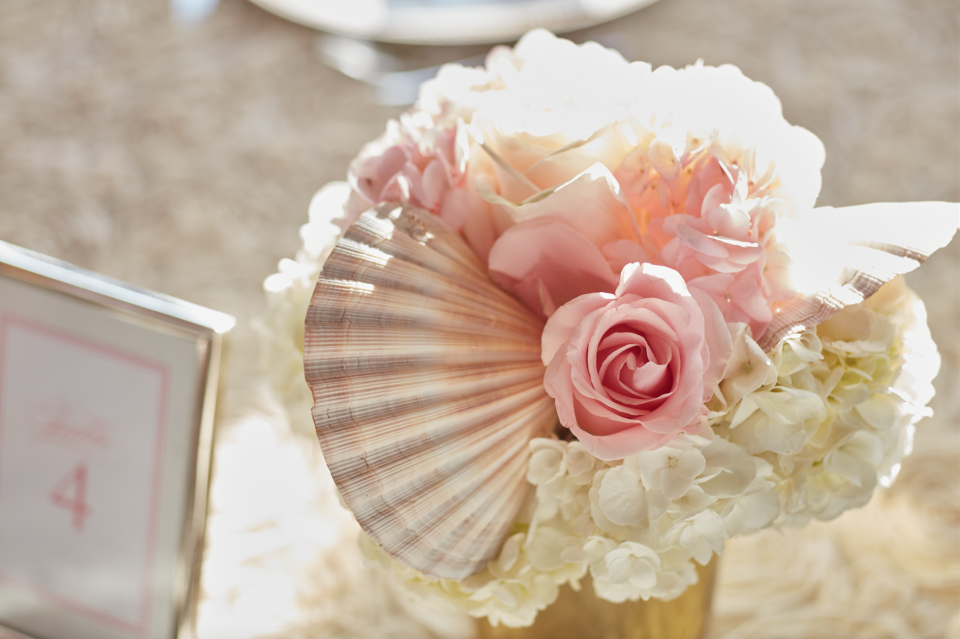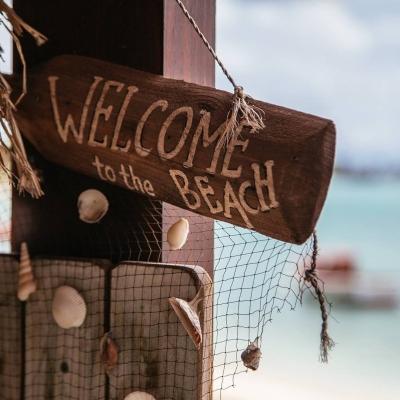Trending now— The Wedding Mandap
Today’s growing global society puts a spotlight on the diverse traditions of cultures around the world. Weddings are often highlighted by local customs, culture, religions, and traditions, and today’s modern couples are embracing traditions outside of their own cultures and including them in their nuptial celebrations.
Local event planner Fernando Mansur, owner and operator of House of Mosaic, informs that the traditional Hindu mandap is a request he is getting more often these days from non-Hindu couples.
A mandap is a structure with four pillars (to represent the strength and hard work of the four parents of the couple, and also to represent the home the couple will share) and a canopied roof that is either mobile or temporarily constructed. In Hindu wedding ceremonies, the mandap is the alter, typically with royal-style chairs for the bride and groom, as well as room for the parents of the bride. 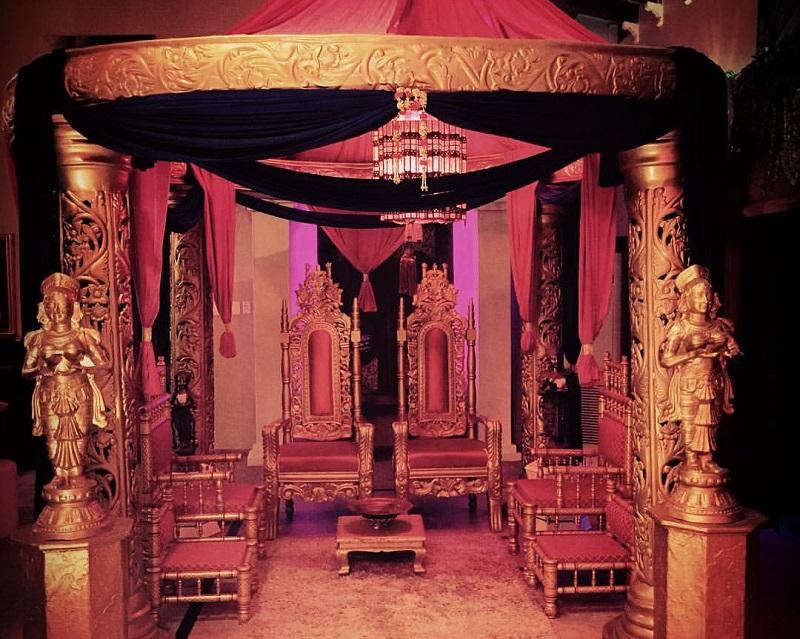
Pictured here is a traditional mandap by House of Mosaic, as well as a mandap Fernando Mansur tailored for a wedding reception for an Italian couple held in the ballroom of the Hyatt Regency Aruba Resort Spa & Casino.
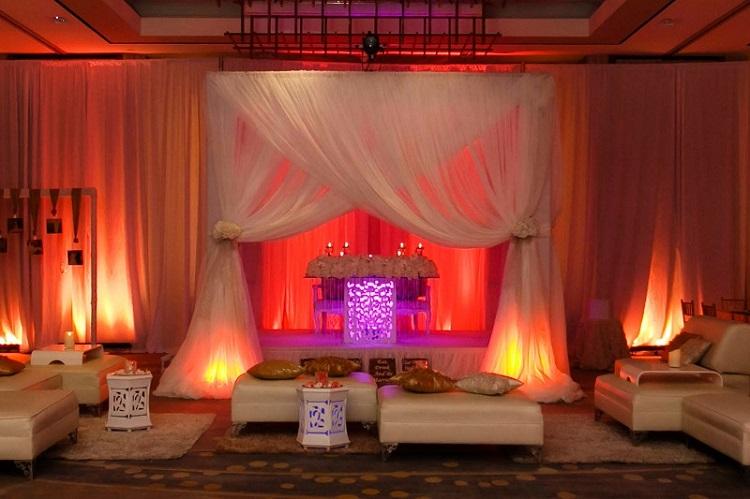
Typically, a mandap is decorated with items like coconuts, mango leaves, banana leaves, and religious statues. Bright and bold sheaths of cloth and crystals are also very popular. Fernando explains that couples—both Hindu and non-Hindu—are now requesting mandap decor with softer color palates and flowers. Not only is the mandap ideal as an alter, but it can also be moved to the reception area for special seating for the newlyweds.
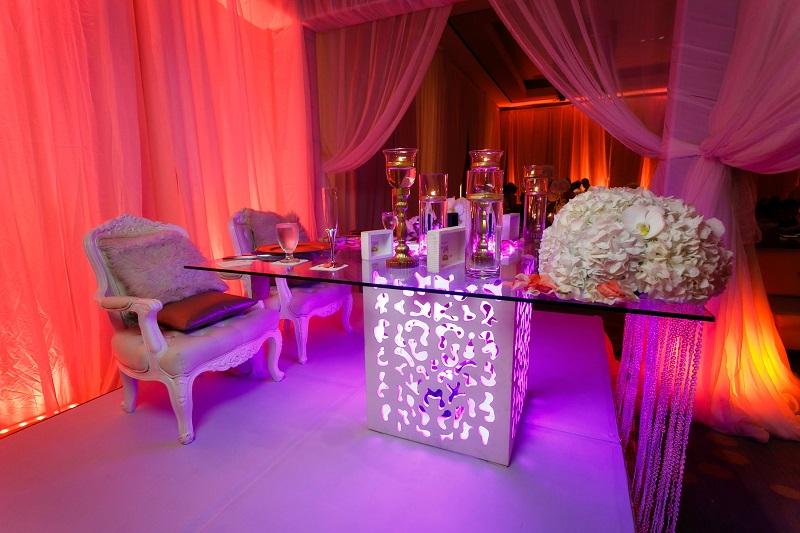
References:
Rituals & Customs of a Hindu Wedding: Design & Planning Guide by Kavita Kapoor

